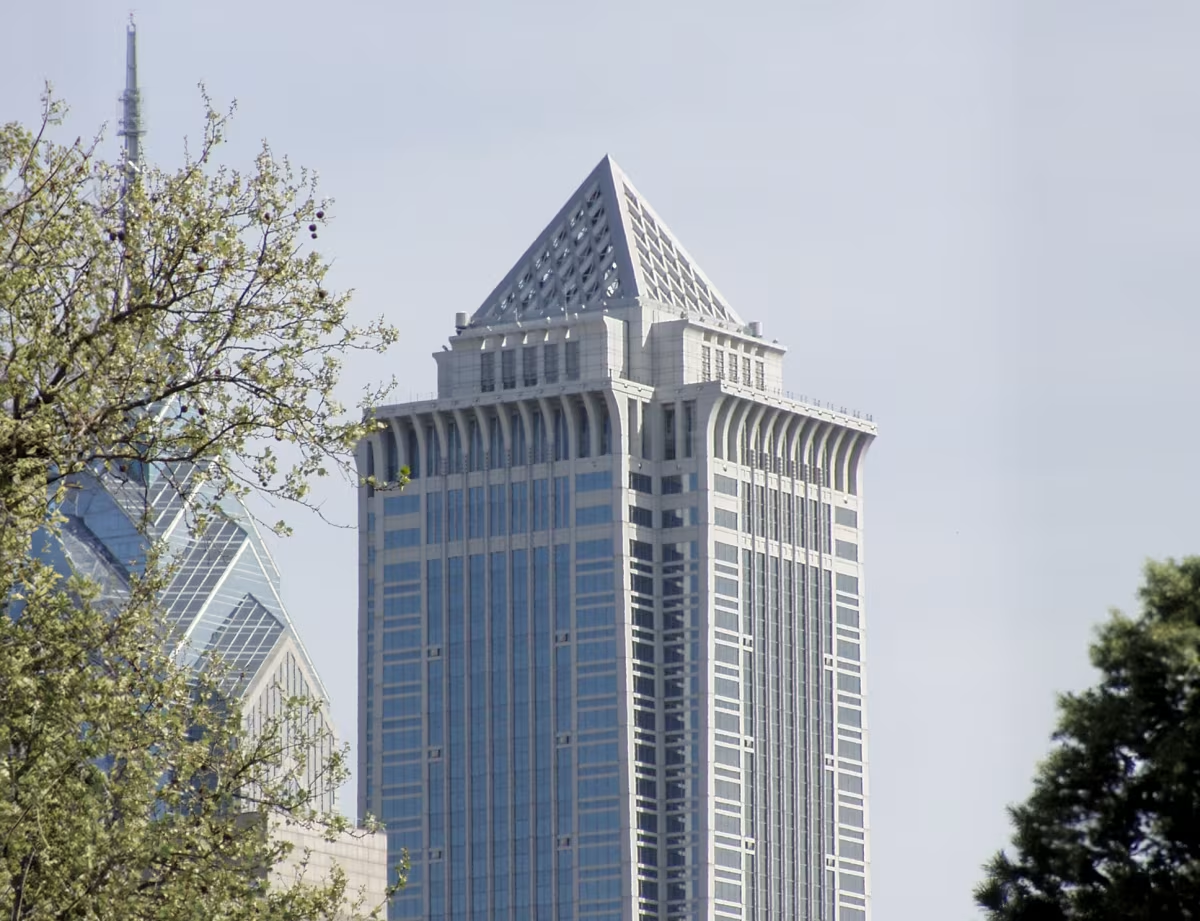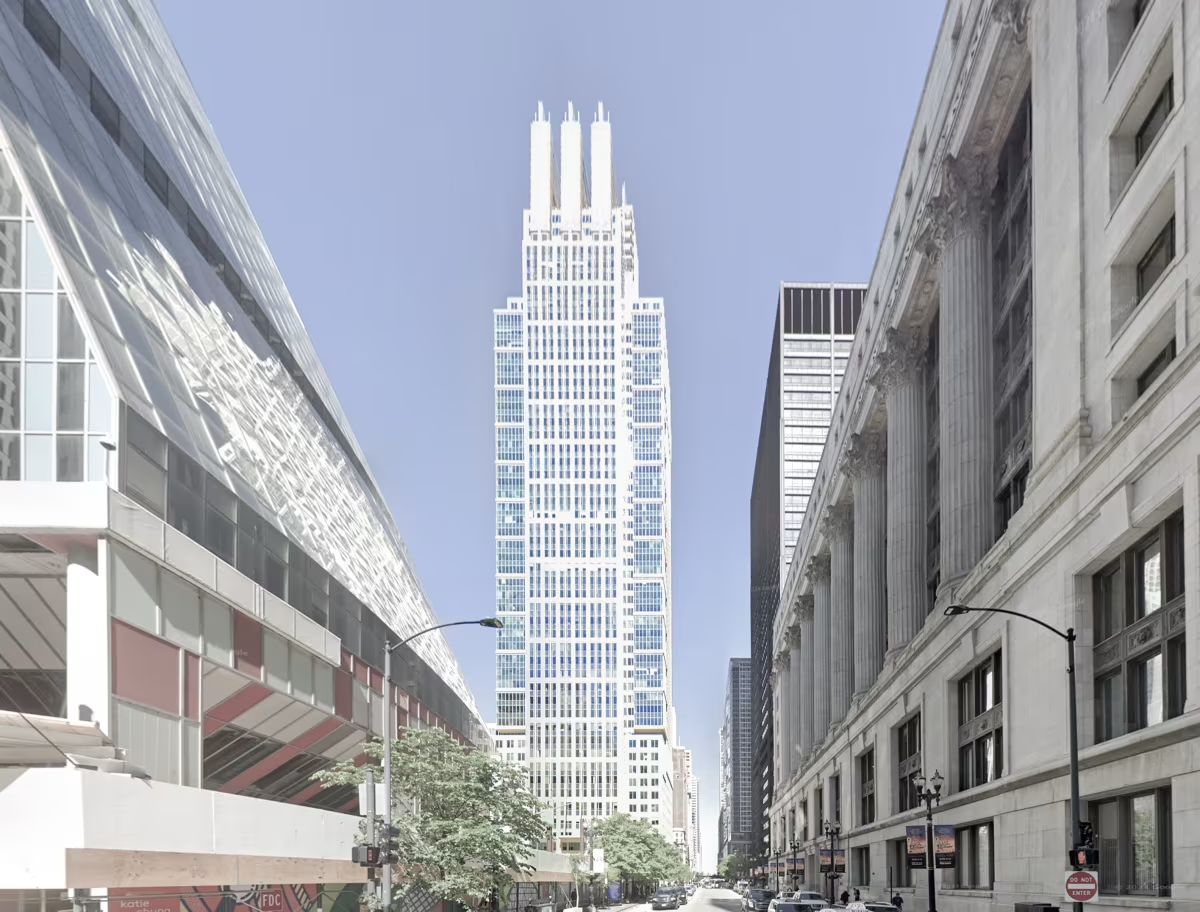BNY Mellon Center Philadelphia Building vs Grant Thornton Tower


Comparing the BNY Mellon Center Philadelphia Building and the Grant Thornton Tower is an interesting exercise, because even though they are located in different cities (Philadelphia, PA and Chicago, IL), both were designed by Kohn Pedersen Fox Associates and finished within within 2 years of each other. This gives us the chance to see how the same architect's ideas were expressed in different urban contexts almost simultaneously.
Height & Size
The BNY Mellon Center Philadelphia Building is clearly the larger tower of the two, both in terms of height and number of floors. It rises to 791ft (241m) with 54 floors above ground, while the Grant Thornton Tower reaches 755ft (230m) with 50 floors above ground.
Of course, each project may have faced different briefs or regulatory constraints, which we don't really know about and could also explain the outcome.
Architectural Style
Both the BNY Mellon Center Philadelphia Building and the Grant Thornton Tower were designed in line with the aesthetic conventions of the Postmodernism style.
The Grant Thornton Tower was designed at a moment when the Postmodernism style was already in decline, making it more of a lingering expression of the movement. In contrast, the BNY Mellon Center Philadelphia Building was built when the style still carried greater cultural weight.
Uses
Both the BNY Mellon Center Philadelphia Building and the Grant Thornton Tower were designed to serve as commercial towers, and that has remained their main use since their completion, serving similar roles in the urban fabric.
The BNY Mellon Center Philadelphia Building also provides 160 parking spaces.
Structure & Facade
Both the BNY Mellon Center Philadelphia Building and the Grant Thornton Tower rely on a Frame structural system.
A frame structure uses a grid of columns and beams to carry the building's loads. This frees the walls from structural duties, allowing for flexible floor plans and larger windows.
They also employ the same type of facade, a Curtain Wall facade.
A curtain wall is a non-load-bearing facade hung from the structural frame. It is anchored to floor slabs and transfers only its own weight and wind loads, allowing for sleek, glassy exteriors.
| BNY Mellon Center Philadelphia Building | Grant Thornton Tower | |
|---|---|---|
| Kohn Pedersen Fox Associates | Architect | Kohn Pedersen Fox Associates |
| 1988 | Construction Started | 1990 |
| 1990 | Year Completed | 1992 |
| Postmodernism | Architectural Style | Postmodernism |
| Commercial | Current Use | Commercial |
| 54 | Floors Above Ground | 50 |
| 2 | Floors Below Ground | 3 |
| 241 m | Height (m) | 230 m |
| 137,071 m² | Usable Area (m²) | 105,166 m² |
| Frame | Structure Type | Frame |
| Steel And Concrete | Vertical Structure Material | Reinforced Concrete |
| Steel And Concrete | Horizontal Structure Material | Reinforced Concrete |
| No | Facade Structural? | Yes |
| CommonWealth REIT | Developer | Linpro Company |
| WSP Cantor Seinuk | Structural Engineer | Severud Szegezdy Associates |
| PA | State | IL |
| Philadelphia | City | Chicago |
| 1735 Market Street | Address | 161 171 North Clark Street |